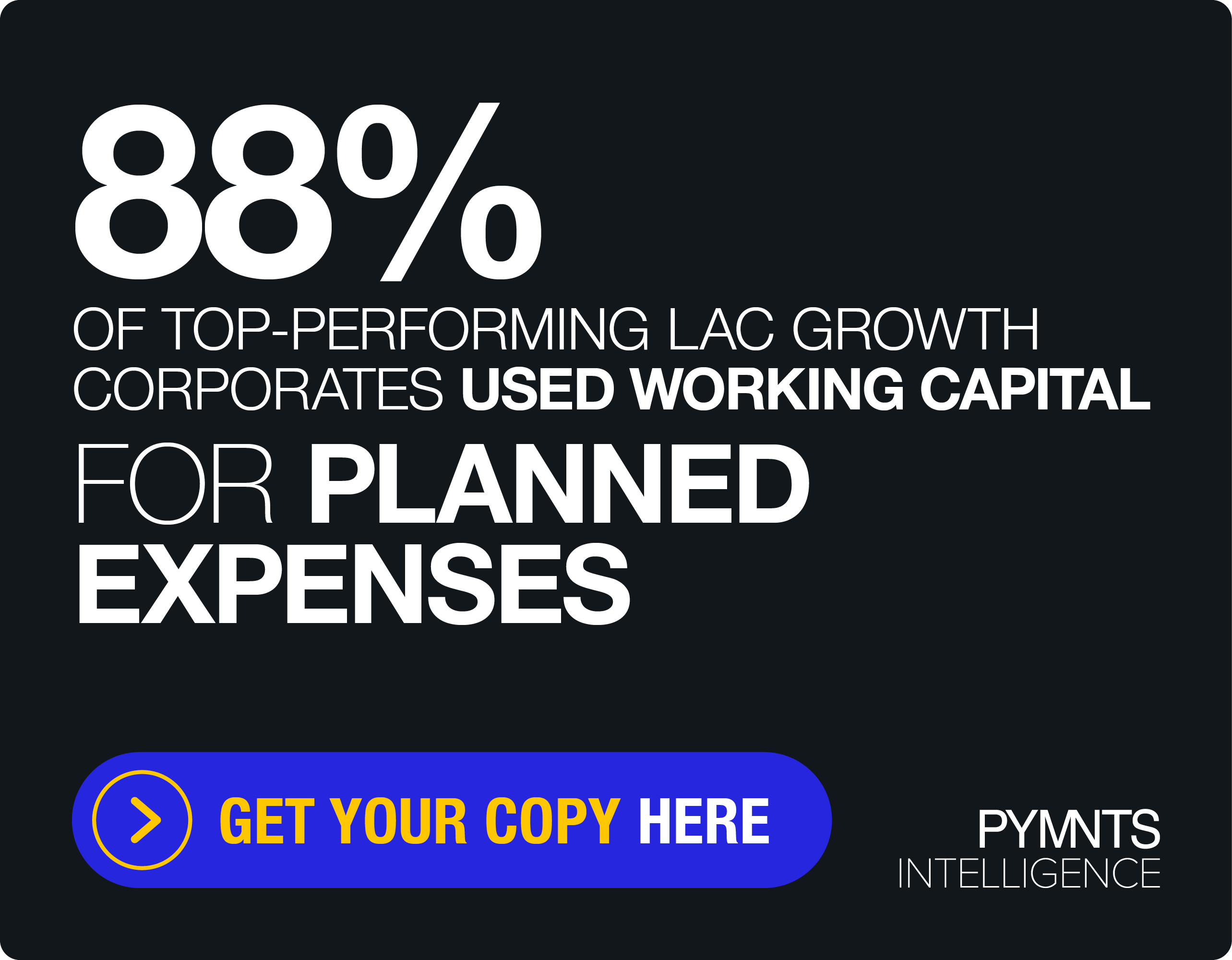57% of CFOs Say Technology Investments Are About Transformation, Not Automation

One-touch payments and other swift solutions are commonly used by consumers, but the in B2B world, many businesses have not embraced the latest technologies yet and continue to be weighed down by paper-intensive and outdated payment processes.
But that is rapidly starting to change as the speed and convenience of consumer payments are increasingly entering the business arena thanks to the many pandemic-related challenges that have hastened their advance. As B2B companies continue to deal with the pandemic’s economic fallout, innovation has been a priority, and companies are continuing to change.
In fact, 57% of chief financial officers (CFOs) told PYMNTS that their technology investments are about transformation, not automation, according to the August Global B2B Payments Playbook, done in collaboration with Worldpay.
Consumer-Like Payment Systems
“The biggest benefit of adopting a consumer-like payment system for your B2B transactions is that it will save your company time and money,” Holly Worst, director of Vertical Growth – Retail, Grocery and Petrol at Worldpay from FIS, told PYMNTS.
She explained that by switching to a digital format, companies can seamlessly integrate into their accounts payable (AP) and accounts receivable (AR) processes, eliminating the countless hours wasted with the manual reconciliation of checks and cash transactions.
PYMNTS reported the share of businesses that made at least 90% of their payments digitally increased by 12 percentage points, and this growth is expected to continue over the next two years, if not longer.
Rich Data
Another part of businesses’ transformation has been the use of the host of rich data that comes with digital payments. Tapping into this information can help firms further streamline their operations, control their cash flows and unlock insights into their back-end processes.
Firms can even tap into solutions powered by application programming interfaces (APIs) and data integrations, giving them added transparency into their finances and priming them for success as payment processes around the world continue to go digital.
The real-time data resulting from digitizing the B2B payments experience allows companies to assess their largest areas of spend or revenue and helps them make robust, informed decisions.
“We are in the age of Big Data, and there is no excuse to not always provide and make a data-driven decision,” Worst said.
Faster Payment
Another benefit of digitizing B2B payments is that companies can get paid faster. Cash flow management is pivotal for companies to help fund growth and innovation.
“By using credit cards or real-time payment transfers, companies can see funds settled instantly or within one to three days,” Worst said.
Preventing errors in payment details is another way to speed transfers. These errors are one of the biggest friction points in the cross-border B2B payments space.
Third parties are stepping in with solutions to solve these issues. Global messaging service SWIFT, for example, has rolled out a service that allows banks to verify beneficiaries’ financial details before payments are made. The solution ultimately allows senders to leverage an API that can prevent mistakes that would require time and resources to fix.
Heightening Expectations
These innovations also enable B2B companies to better serve their customers. Firms have heightening expectations regarding the terms and customer experiences they receive from their vendors.
In fact, PYMNTS reported, 69% of B2B buyers want their business partners to offer new ways to access products and services, and 85% of them desire positive experiences with their business partners as much as they do services and products.
Together, these benefits have driven innovation. A global study found that 79% of CFOs have increased their technology transformation. The survey found that small- to medium-sized businesses (SMBs) have been particularly enthusiastic in adopting digital services.
By continuing to make updates, they can achieve the transformation they’re looking for.
